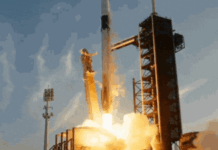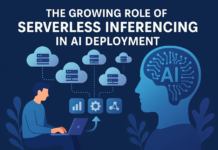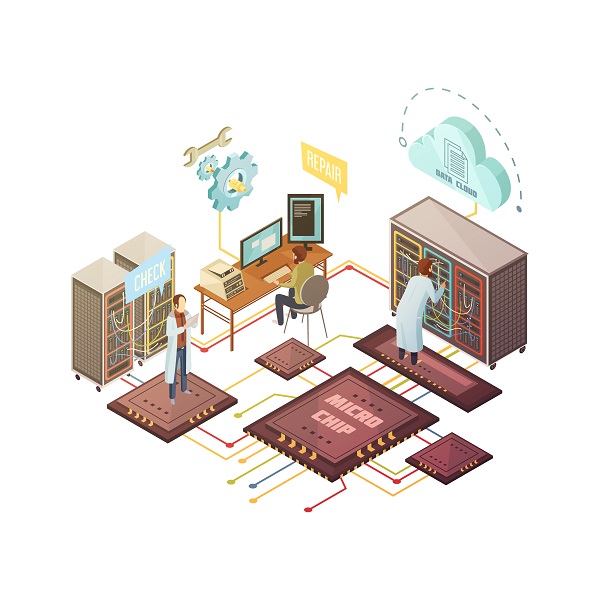In today’s data-driven world, speed and efficiency are everything. Whether you’re training deep learning models, rendering complex animations, or running scientific simulations, you need serious computational power. This is where GPU as a Service (GPUaaS) steps in—a cloud-based solution that’s transforming how businesses and developers access high-performance computing.
What is GPU as a Service?
GPU as a Service is a cloud computing model that provides remote access to powerful Graphics Processing Units (GPUs) on a pay-as-you-go basis. Instead of investing in expensive hardware and maintaining it in-house, organizations can rent GPU resources from cloud providers. This allows users to scale their computing needs on demand, without the overhead of physical infrastructure.
Why Traditional CPUs Fall Short
Central Processing Units (CPUs) are great for general-purpose computing. But when it comes to highly parallel tasks like deep learning, 3D rendering, and large-scale data processing, CPUs often fall behind. GPUs, with their thousands of cores, are specifically designed to handle these tasks faster and more efficiently.
With GPUaaS, this kind of power is no longer limited to large corporations or research labs. Startups, small businesses, and independent developers can all tap into this resource without breaking the bank.
Key Use Cases of GPU as a Service
- Machine Learning and AI
- Training deep neural networks requires enormous processing power. GPUaaS enables data scientists and ML engineers to accelerate training times and iterate models more quickly.
- Training deep neural networks requires enormous processing power. GPUaaS enables data scientists and ML engineers to accelerate training times and iterate models more quickly.
- Rendering and Animation
- Professionals in gaming, VFX, and architectural visualization benefit from GPUaaS by speeding up rendering workflows. This leads to quicker project delivery and lower costs.
- Professionals in gaming, VFX, and architectural visualization benefit from GPUaaS by speeding up rendering workflows. This leads to quicker project delivery and lower costs.
- Scientific Research
- From climate modeling to genomics, many scientific computations involve massive datasets. GPUaaS allows researchers to run simulations and analyses without building expensive local clusters.
- From climate modeling to genomics, many scientific computations involve massive datasets. GPUaaS allows researchers to run simulations and analyses without building expensive local clusters.
- Cryptocurrency and Blockchain
- Some blockchain applications and crypto mining operations require high-throughput parallel processing. GPUaaS offers flexibility and performance without the need to purchase specialized hardware.
- Some blockchain applications and crypto mining operations require high-throughput parallel processing. GPUaaS offers flexibility and performance without the need to purchase specialized hardware.
- Augmented and Virtual Reality
- Developing AR/VR applications demands real-time graphics rendering and processing power. GPUaaS offers the performance needed for testing and production environments alike.
- Developing AR/VR applications demands real-time graphics rendering and processing power. GPUaaS offers the performance needed for testing and production environments alike.
Advantages of GPU as a Service
- Scalability
- Instantly scale GPU resources up or down based on workload requirements. Whether you need one GPU or a hundred, GPUaaS adjusts to your needs.
- Instantly scale GPU resources up or down based on workload requirements. Whether you need one GPU or a hundred, GPUaaS adjusts to your needs.
- Cost Efficiency
- Eliminate the need for capital expenditure on GPUs. Pay only for what you use, making it budget-friendly for businesses of all sizes.
- Eliminate the need for capital expenditure on GPUs. Pay only for what you use, making it budget-friendly for businesses of all sizes.
- Global Accessibility
- Access high-performance GPU resources from anywhere with an internet connection. This remote accessibility is ideal for globally distributed teams.
- Access high-performance GPU resources from anywhere with an internet connection. This remote accessibility is ideal for globally distributed teams.
- No Maintenance Overhead
- Forget about upgrades, cooling systems, or troubleshooting faulty GPUs. The cloud provider handles all maintenance, ensuring you get uninterrupted performance.
- Forget about upgrades, cooling systems, or troubleshooting faulty GPUs. The cloud provider handles all maintenance, ensuring you get uninterrupted performance.
- Integration Flexibility
- Easily integrate with development environments, machine learning frameworks, and containerized workflows. GPUaaS supports seamless compatibility with common tools and platforms.
- Easily integrate with development environments, machine learning frameworks, and containerized workflows. GPUaaS supports seamless compatibility with common tools and platforms.
When Should You Consider GPU as a Service?
GPUaaS is not a one-size-fits-all solution. Here are some scenarios where it’s especially valuable:
- You need GPUs temporarily for a short-term project.
- Your workloads vary significantly throughout the year.
- You’re just getting started with AI or machine learning and want to avoid upfront hardware costs.
- You want to test multiple GPU types before deciding on a longer-term investment.
- You require a distributed infrastructure that allows collaboration across different geographies.
Challenges and Considerations
While GPUaaS is powerful, it’s essential to be aware of potential limitations:
- Data Transfer Bottlenecks
- Transferring large datasets to and from the cloud can be time-consuming and expensive. Proper planning and compression techniques can help mitigate this.
- Transferring large datasets to and from the cloud can be time-consuming and expensive. Proper planning and compression techniques can help mitigate this.
- Security and Compliance
- When dealing with sensitive data, ensure that the service meets your industry’s security and compliance requirements.
- When dealing with sensitive data, ensure that the service meets your industry’s security and compliance requirements.
- Latency
- For applications requiring real-time responsiveness (like gaming or AR), latency could be an issue depending on your location and the cloud infrastructure.
- For applications requiring real-time responsiveness (like gaming or AR), latency could be an issue depending on your location and the cloud infrastructure.
The Road Ahead
The demand for GPU resources continues to grow, especially with the rise of AI, data analytics, and immersive experiences. GPU as a Service is making these technologies more accessible by lowering the entry barrier and allowing users to innovate without constraints.
As infrastructure continues to improve and costs decline, GPUaaS will likely become the default choice for organizations seeking flexibility, power, and efficiency in high-performance computing.
Conclusion
GPU as a Service represents a major shift in how we approach computing-intensive tasks. By offering affordable, scalable, and accessible GPU power, it’s helping businesses, researchers, and developers work faster, smarter, and more cost-effectively. If you’re working with data-heavy applications or want to future-proof your computing strategy, GPUaaS is a technology worth exploring.






















































